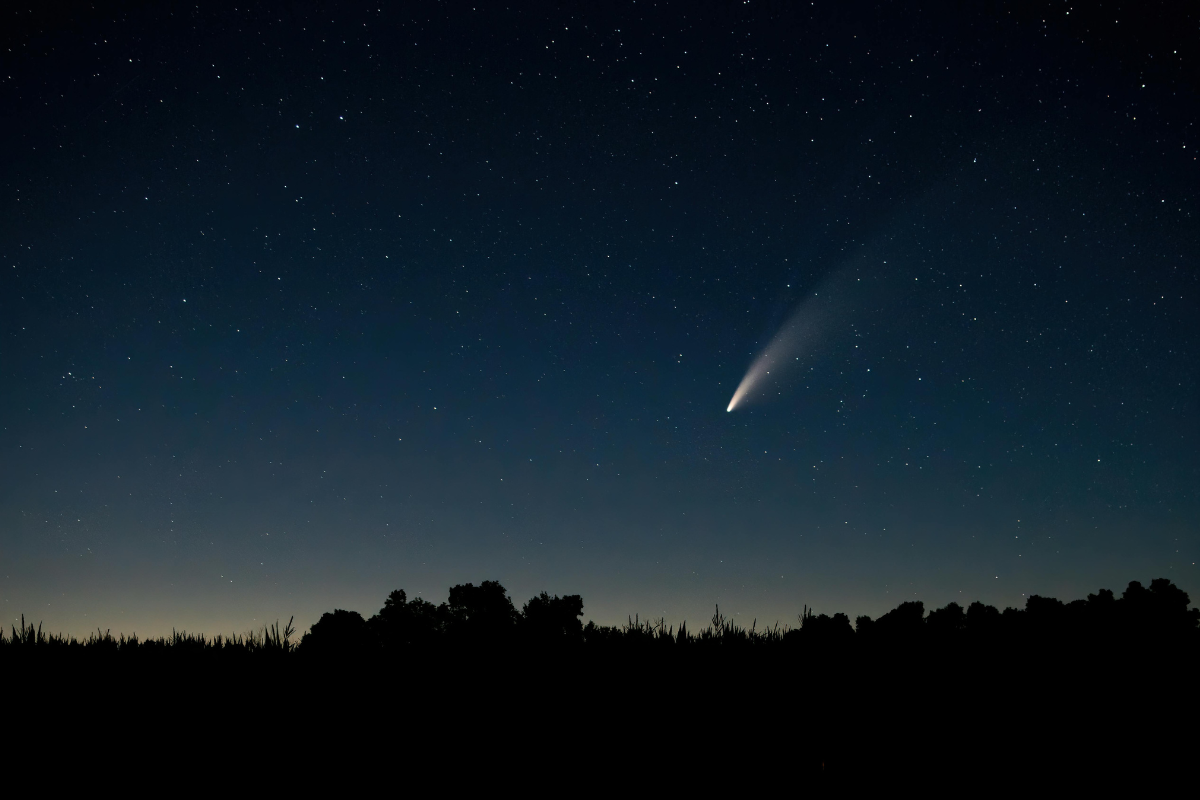Astronomers and space enthusiasts were captivated this summer by the interstellar object known as 3I/ATLAS, which appeared to change colours during its journey through the solar system. Reports circulated on social media and news platforms, claiming the object shifted from a fiery red to a ghostly green as it approached the Sun. However, scientists associated with NASA are now providing a clearer understanding of this phenomenon, suggesting that the colour change may have been more of an optical illusion than an actual transformation.
Discovered in July 2023, 3I/ATLAS is the third verified interstellar object identified, following the notable ‘Oumuamua’ in 2017 and 2I/Borisov in 2019. As it made its closest approach to the Sun on October 30, 2023, three solar observatories captured stunning images revealing a noticeable increase in brightness. Observers noted that 3I/ATLAS appeared “distinctly bluer than the Sun,” a description that fueled global speculation regarding its colour dynamics, as outlined in a recent preprint on arXiv.
Clarifying the Illusion
In a statement to Space.com, Qicheng Zhang, a postdoctoral fellow at Lowell Observatory in Arizona, explained that there is no evidence suggesting that the gas coma around 3I/ATLAS is changing colours. “Our result just showed that the gas coma is likely still around and contributing substantially to the overall brightness,” Zhang stated.
The apparent blue-green hue observed is a common occurrence among comets, often referred to as “dirty snowballs.” These celestial bodies release gas and dust when the solar heat vaporizes their icy surfaces. The interaction of sunlight with molecules such as diatomic carbon (C2) and cyanogen (CN) results in the bluish-green glow familiar to astronomers. Zhang noted that amateur astronomers first detected this shimmering green halo encircling the object as early as September 2023. “As far as we know, the comet just ‘changed colour’ once when its gas coma first became visible or bright, and it’s still like that now—only brighter,” he remarked.
Adding to the intrigue, images taken on November 5, 2023, from the R. Naves Observatory in Spain show 3I/ATLAS without a visible tail, a characteristic typically observed in comets. This absence has left astrophysicists questioning the nature of the object. Notably, Avi Loeb, a scientist from Harvard University, suggested to The New York Post that if the interstellar object continues to lack a tail, it may not be a naturally occurring comet. His analysis argues that this observation challenges conventional comet models, which predict a visible tail formed by significant solar heating and gas release.
Uncovering the Mysteries Ahead
Loeb has identified nearly a dozen anomalies associated with 3I/ATLAS. The comet has reportedly brightened fivefold since its perihelion, exhibits an unusual anti-tail directed towards the Sun, and follows a hyperbolic trajectory, indicating its origin outside the Solar System. Furthermore, its considerable size—roughly comparable to Manhattan—and its movement suggest a unique form of non-gravitational acceleration.
While some speculate about the possibility of alien-engineered propulsion, NASA maintains that 3I/ATLAS is a natural object. As it approaches Earth, set to reach its nearest point in late December 2023, approximately 170 million miles away, the excitement among scientists continues to grow. Loeb has called on NASA to release high-resolution images captured by the Mars Reconnaissance Orbiter’s HiRise camera, which could provide crucial insights into the interstellar visitor once federal operations resume.
He stated, “When you have a visitor to your backyard, you better know its nature.” The ongoing enigma surrounding 3I/ATLAS serves as a thrilling reminder of our limited understanding of the cosmos. Whether it turns out to be a typical interstellar comet or something more extraordinary, each new discovery enhances our comprehension of the mysteries that lie in deep space.







